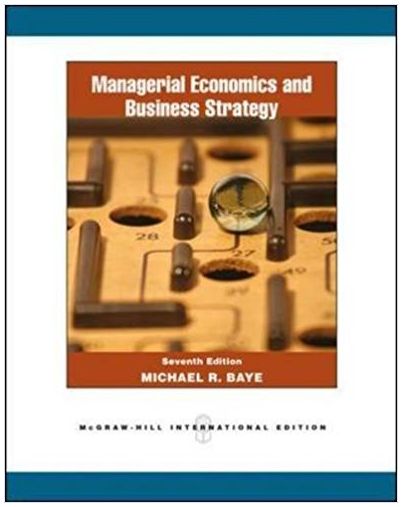Question
The homework is at the attachment, please check. Below is the instruction for the problem I am asking. Assignment 2 (you may find the assignment
The homework is at the attachment, please check. Below is the instruction for the problem I am asking.
Assignment 2 (you may find the assignment box for submission on the course site) is due on Tuesday, July 21, by midnight. We will have a discussion session on Monday, July 20. I will send an invitation in a separate announcement.
In Assignment 2 you will be required to compare the optimal linear tax model we have discussed in class with a welfare system which is comprised of a flat tax component and a means- tested transfer program.
In the first part, you need to draw the budget curve faced by a typical consumer. You can either draw it in the c-l space or in the c-y space. You should do it in two steps. First draw the flat tax schedule (in the absence of the SSI program). Now modify the curve to incorporate the transfer program. Make sure the transfer applies only to individuals whose level of income falls below the specified threshold. You should get a kinked budget curve!
In the second part, you need to calculate the MTR - an acronym for the marginal tax rate - for individuals who are eligible for an income supplement (caution!!! this is the effective marginal tax rate and not the statutory one, given by t). You can play with numbers to ensure you get the right answer. You need to demonstrate that the effective marginal tax rate is 100 percent! The easiest way to get it is to draw the budget line in the c-y space, then 1-dc/dy=MTR, thus you need to show that dc/dy=0 (what would a budget line with such a property in the relevant range look like?).
To demonstrate the distortion on labor market participation choice, draw the indifference curve for the typical consumer (do it in the c-y space) and show that when the curve is steep enough (for a low ability worker) we get a corner solution, that is the worker prefers to stay out of the labor market and rely on government support only.
In the third part, you need to formulate the government program. The government seeks to pay benefits only to the low ability worker. In light of the 100 percent MTR each worker has essentially two options: work and earn enough, so that eligibility for benefits is forgone, or do not work at all and rely on government support. The incentive constraints should ensure that the low skill guy will indeed choose not to work whereas the high skill guy will choose to work and will not receive benefits. You need to calculate the utility associated with each one of these two options faced by the worker and write two incentive (inequality) constraints for the high skill guy and for the low skill one, respectively. You also need to formulate the revenue constraint of the government which takes into account the choice of the two individuals (one is working and the other is receiving benefits).
You can skip the next three (more technical) parts and just show that when both the revenue constraint and the incentive constraint of the high skill agent are binding (satisfied as equalities) then the optimal tax rate is t=1/3. You will basically solve a system of two equations for two unknowns.
Now we get to the interesting part. Assume that the wage rate of the low skill guy is zero - so he possesses no market skills at all. Calculate the utility of the low skill guy in this case and compare it with the optimal solution of the linear tax we have solved in class (the government would set the tax at the Laffer rate in this case - make sure you have got it right). Show that the SSI program makes the poor guy better off relative to the linear system. Try to provide interpretation. Think of the targeting advantages of the SSI system and the costs associated with crowding out the low-skill guy from the labor market. Is this a real cost given our parametric assumptions? Can you generalize the conclusion to the case in which the low skill guy will have a positive wage rate?

Step by Step Solution
There are 3 Steps involved in it
Step: 1

Get Instant Access to Expert-Tailored Solutions
See step-by-step solutions with expert insights and AI powered tools for academic success
Step: 2

Step: 3

Ace Your Homework with AI
Get the answers you need in no time with our AI-driven, step-by-step assistance
Get Started


